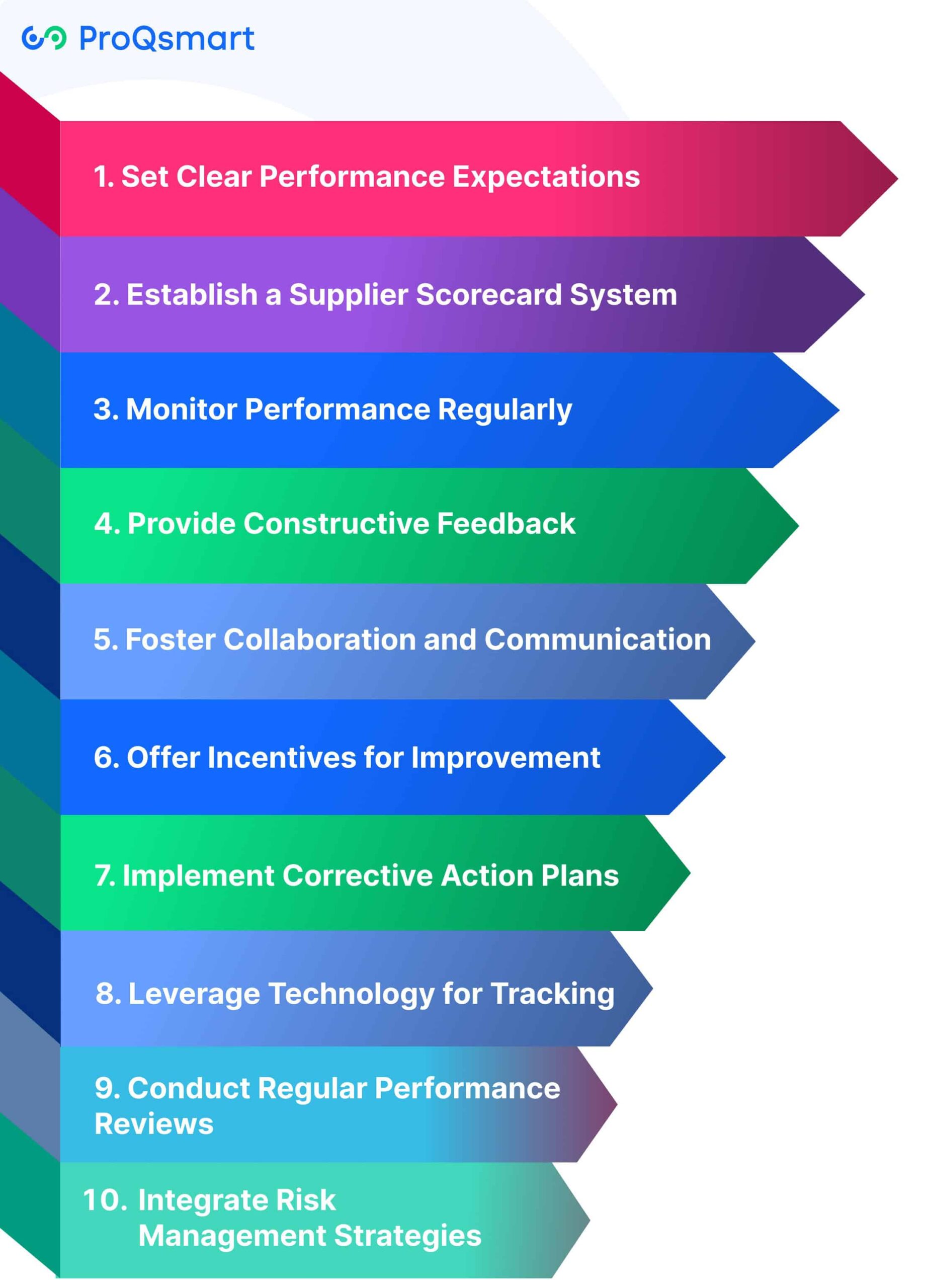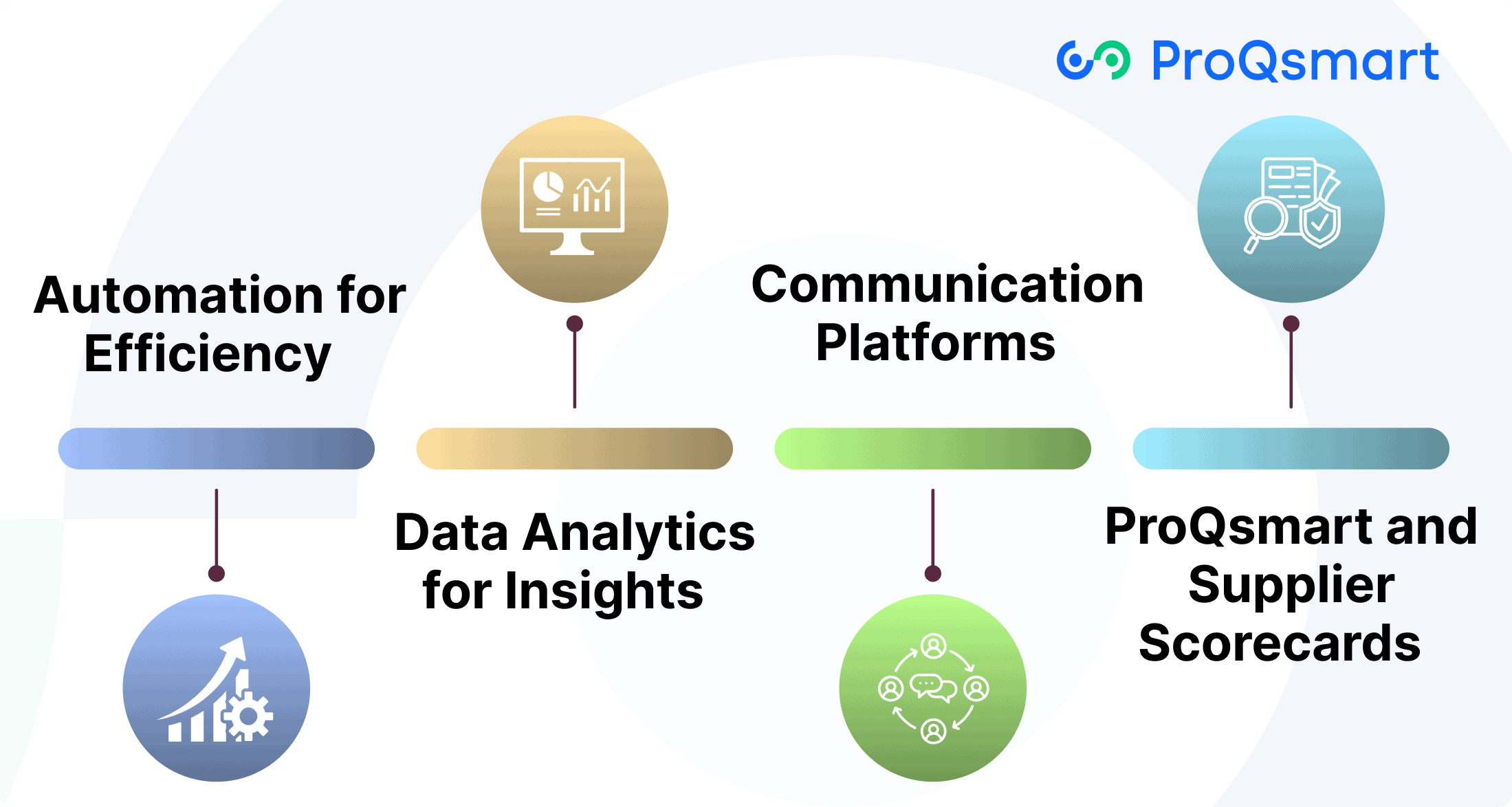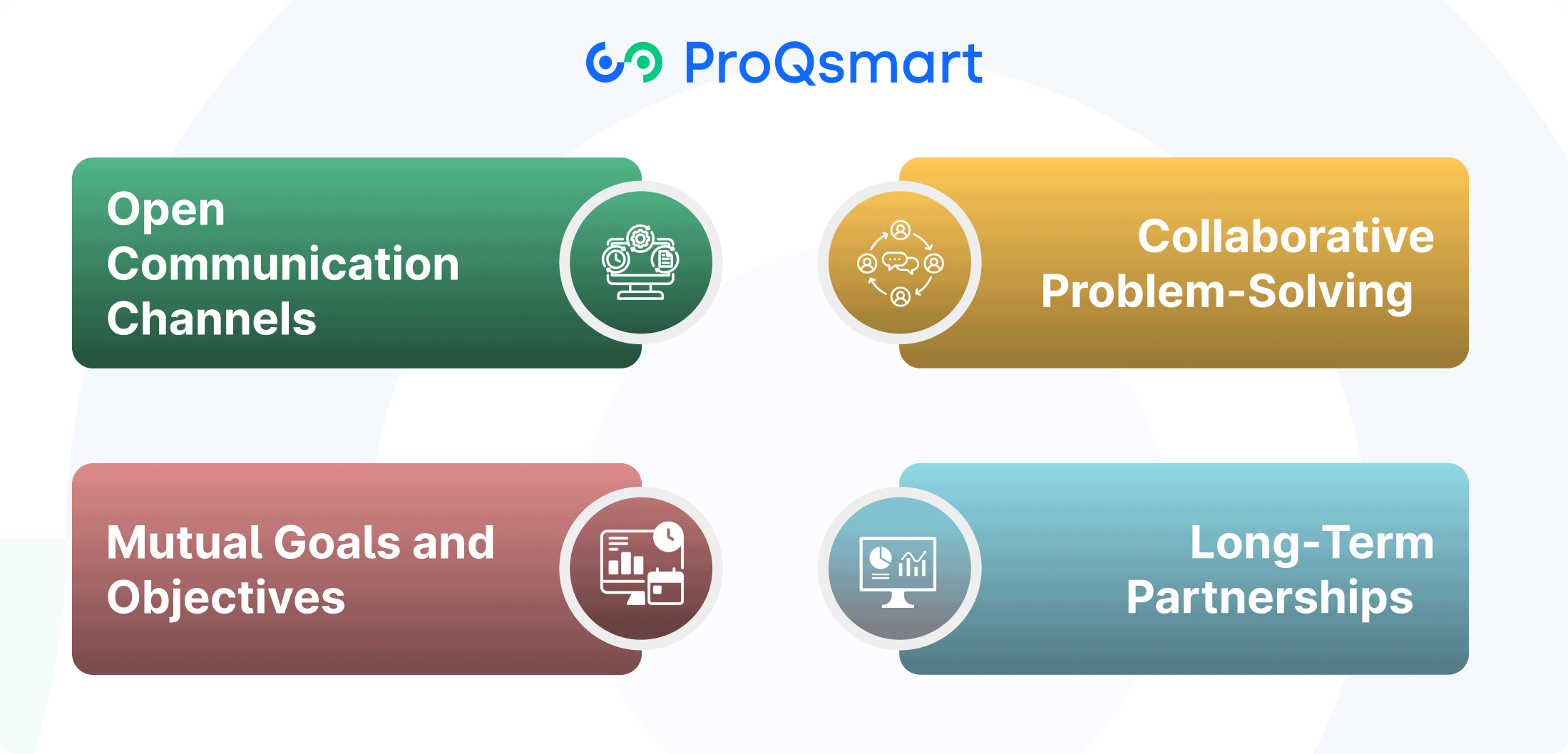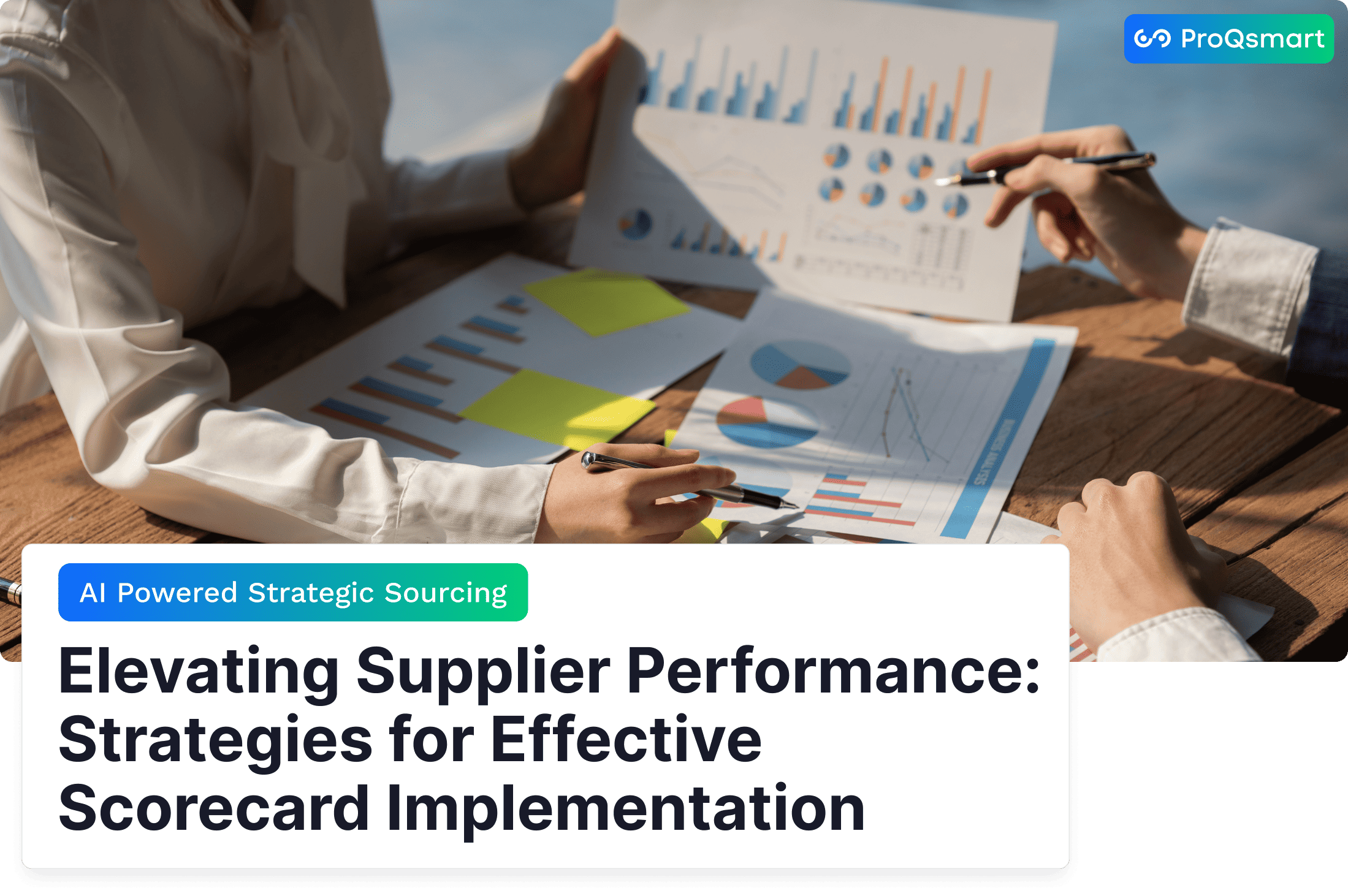Evaluating supplier performance is crucial for maintaining efficient supply chains and ensuring that suppliers meet organizational expectations in areas such as quality, delivery, cost, and compliance. A supplier scorecard is a strategic tool that helps businesses assess and track supplier performance based on predefined metrics, enabling informed decisions that align with organizational goals.
By implementing an effective supplier scorecard, organizations can identify reliable partners, pinpoint areas for improvement, and foster stronger supplier relationships. This approach reduces risks, contributes to cost savings, and enhances operational excellence by focusing on key metrics such as on-time deliveries, defect rates, and responsiveness.
This article will delve into practical strategies and tools for effectively assessing and enhancing supplier performance through scorecard implementation, providing insights into how to create, manage, and leverage these scorecards to drive better procurement outcomes.
Why Supplier Performance Matters in Procurement
Supplier performance management is crucial to any effective procurement strategy, as it directly impacts operational procurement by enhancing cost efficiency and customer satisfaction. When suppliers maintain consistent quality and delivery, they significantly minimize risks associated with underperforming suppliers. This reliable supplier performance not only stabilizes operations but also contributes to overall business efficiency.
Strong supplier performance directly influences the bottom line, leading to cost savings and improved process efficiency. By identifying cost overruns and collaborating with strategic suppliers who can offer cost-effective solutions, procurement teams can better manage budgets and allocate resources effectively. This proactive approach also supports ongoing supplier performance management initiatives.
An average procurement department oversees approximately 3,000 suppliers for every $1 billion in spend. Efficient supplier performance management software is essential for navigating these complex supplier networks and ensuring consistent service delivery, ultimately aligning supplier performance with key business objectives.
How Scorecards Impact on Supplier Performance
Scorecards are an essential part of performance management and understanding where a supplier stands in relation to a business with clear, measurable, and attainable metrics. These tools make data on delivery performance, defect rates, compliance and other issues visible, allowing procurement teams to identify suppliers that need improvement efforts focused on them.
As an instance, examining scorecard trend analysis could reveal a supplier is often late with deliveries, allowing procurement to develop more focused corrective action plans. Beyond these metrics, scorecards create transparency and accountability, reinforcing procurement’s relationship with their suppliers.
Examples such as ProQsmart go beyond to improve the procurement process. They streamline and automate supplier performance monitoring, deliver real-time insights, and enforce compliance to ensure a smooth, seamless operation.
Key Performance Indicators (KPIs) for Suppliers
Measuring supplier performance through KPIs is essential for maintaining a resilient and efficient supply chain management process. By defining clear metrics, businesses can track performance gaps, mitigate risks, and foster long-term positive supplier relationships, ultimately enhancing their overall operational procurement strategy.
Delivery Performance Metrics
On-time delivery is a key measure of supplier reliability. By tracking metrics such as on-time delivery rates, it becomes clear how effective suppliers are at delivering within the time frame established.
Take, for example, a supplier that is always at 95% on-time delivery – they’ve shown their reliability. By analyzing delivery trends, you can identify inefficiencies or repeating delays and make focused improvements.
Quality Assurance Indicators
Quality metrics, like defect rate, measure the defect rate as a percentage of the entire production. For instance, a supplier that has a defect rate of 1% shows they are performing very well against quality standards.
Frequent evaluations help suppliers meet quality requirements, allow for the development of ongoing improvement programs and limit the potential of inferior deliverables.
Cost Efficiency Measures
Ensuring alignment of cost structures is a key to value for procurement teams, particularly as minimizing costs is frequently their leading goal. KPIs such as tracking procurement costs against established budgets help to quickly identify any potential overruns.
Additionally, estimating and measuring value is crucial. Understanding total cost of ownership allows a more holistic view of supplier impact on operational and financial efficiencies.
Lead Time Analysis
Lead time KPIs are useful indicators of supply chain responsiveness. By keeping track of these differences, companies are able to identify the bottlenecks, including supplier delays, that are affecting delivery schedules.
ProQsmart’s AI-driven tools can dramatically shorten lead times by automating manual workflows. In addition, they promote transparency, helping to ensure that procurement processes continue to further your organization’s goals.
Responsiveness and Communication
Clear communication allows for the quick resolve of any problems that may arise. KPIs that measure response times to inquiries or issues highlight how committed a supplier is to an innovative collaboration.
Establishing regular proactive communication practices fosters a culture of innovation, helping both parties succeed.
How to Enhance Supplier Performance

Improving supplier performance is one of procurement’s most important mandates and deserves a systematic, team-oriented focus. Through measurable actions and advanced tools, businesses can adopt stronger supplier relationships and work toward overall operational excellence.
Here’s how to enhance supplier performance. Below, we dive into real-world strategies to improve vendor performance.
1. Set Clear Performance Expectations
Establishing criteria for what performance looks like at a granular level. For example, set-up measures such as defect rate and on-time delivery rate.
Next, develop these metrics and metrics clearly communicated to your suppliers. Iterating these expectations on a regular basis keeps them relevant and in alignment with changing business objectives.
For instance, a defect rate KPI measuring product quality ensures suppliers consistently meet standards, reducing operational disruptions.
2. Establish a Supplier Scorecard System
A scorecard systematically evaluates performance using relevant KPIs like cost-effectiveness and innovation collaboration.
ProQsmart simplifies scorecard creation, offering centralized tracking of key metrics. This fosters accountability and provides a foundation for supplier development discussions.
3. Monitor Performance Regularly
Regular tracking of key metrics such as on-time delivery or contract compliance rate can help spot trends.
Technology, like ProQsmart, allows for real-time data collection and analysis, providing suppliers with the most accurate information to make smart, strategic decisions.
Making these results public-facing fosters competition and incentivizes continuous improvement and further reinforces the value of transparency.
4. Provide Constructive Feedback
Immediate and actionable feedback are critical. Having conversations where gaps are discussed collaboratively with suppliers helps you make sure problems are corrected appropriately and efficiently.
Celebrating these successes, like accomplishing new sustainability targets, helps drive even more performance improvement year-over-year.
5. Foster Collaboration and Communication
Frequent meetings and joint projects invite discussion and promote creative solutions.
ProQsmart’s collaborative, real-time tools make communication easy, boosting supplier relationship management as a whole.
6. Offer Incentives for Improvement
Incentives linked to key performance indicators, such as financial bonuses for cost savings, ensure higher performance levels.
ProQsmart’s budgetary alignment makes certain that these rewards help the wider company goals.
7. Implement Corrective Action Plans
Well-defined timelines and responsibilities create accountability, which can drive improvement with underperforming suppliers.
With ProQsmart, you can automatically track and measure progress on corrective measures to resolve issues quickly.
8. Leverage Technology for Tracking
Technology-enabled platforms such as ProQsmart create accessible, centralized repositories for contracts, compliance documents, and performance data, making it easier to evaluate potential suppliers.
With AI-powered insights, you can make proactive adjustments so you can maximize efficiency.
9. Conduct Regular Performance Reviews
These regular reviews typically quarterly or at least annually review progress toward those benchmarks and outline new benchmarks going forward.
When suppliers are engaged in these reviews, it helps build a culture of collaboration and planning for the future.
10. Integrate Risk Management Strategies
Identifying risks, such as supply disruptions, ensures preparedness. Incorporating risk assessments into evaluations creates adaptive, resilient supplier relationships. ProQsmart supports this by aligning supplier performance data with performance metrics.
Implementing a Supplier Scorecard: Effective SRM Strategies
A supplier scorecard serves as a critical tool in Supplier Relationship Management (SRM), offering a structured way to evaluate and enhance supplier performance through various metrics. By focusing on supplier KPIs and aligning scorecard objectives with overall business goals, organizations can drive tangible improvements.
Define Objectives and Metrics
To that end, defining the purpose of the scorecard is a critical component. Goals must be aligned with business priorities – such as increasing schedule adherence or driving supplier accountability.
Defect rates, First-Pass Yield (FPY), and CAPA completion time are some key metrics to develop an understanding of the quality of your supplier. For example, a supplier with 100% FPY over time indicates effective quality governance, meaning they are less likely to require a direct intervention.
All objectives must be kept measurable in order to make clear determinations on performance.
Select Relevant KPIs
Key Performance Indicators (KPIs) should directly relate to the purpose of the scorecard. For instance, monitoring supplier responsiveness and certifications helps maintain focus on regulatory compliance and operational efficiency.
By routinely reviewing KPIs, they are transparent and adaptable to changes in business priorities.
Data Collection Methods
So consistent and accurate data collection is key. Automated solutions, such as ProQsmart, simplify this process by automatically validating the complete data set and facilitating real-time reporting.
ProQsmart’s supplier performance monitoring module helps to calculate key supplier scorecard metrics, helping make quick and informed decisions and streamlining your workflow.
Supplier Communication and Training
Transparent communication is key. Implementing a supplier scorecard requires a shift in communication.
Clearly communicating the scorecard’s purpose and value to suppliers along with training and onboarding sets you both up for success. This creates an environment that fosters stronger relationships and working towards success together.
Technology’s Role in Supplier Management

Supplier performance success depends on your ability to leverage supplier performance management software to centralize information, improve project collaboration, and achieve impactful outcomes. The right technology makes it easier to manage underperforming suppliers. They ditch legacy systems such as Excel in favor of modern, automated, and data-driven solutions that eliminate inefficiencies and enhance supplier management.
Automation for Efficiency
Automation is the only way to get rid of busy, repeatable work and reduce opportunities for human error. Corporate America can save millions of employee hours and company dollars by equipping their systems to automatically collect data. These systems can cut entry errors by as much as 90%.
Technology such as ProQsmart can automate workflows, track supplier compliance, and monitor performance in real-time to keep you informed. For instance, automated alerts when deliveries are late guarantee that issues are resolved right away while increasing operational efficiency. These systems help identify high-performing suppliers, critical for companies relying on third-party partnerships.
Data Analytics for Insights
With data analytics, organizations can reveal supplier performance trends and opportunities for future improvement. By tracking KPIs including delivery speed, quality level, and cost competitiveness, analytics tools inform high-level strategic choices.
Platforms such as ProQsmart allow organizations to connect supplier information from various inputs, creating a single source of truth for advanced analysis. Sharing insights with suppliers fosters collaboration, encouraging mutual improvement through data-backed discussions.
Communication Platforms
Good supplier relationship management via technology encourages transparency between suppliers and buyers and creates an environment of responsiveness. Additionally, streamlined communication platforms strengthen team interactions, facilitating real-time problem-solving and enhancing collaborative efforts.
It streamlines communication channels. For example, supplier portals bring all the updates and requests to a centralized place, making communication more seamless. Encouraging your suppliers to adopt these tools helps to build staff-level connections and mutual goals.
ProQsmart and Supplier Scorecards
ProQsmart takes a revolutionary vertical approach to supplier performance management, automating scorecards and tracking SMART goals. Its centralized dashboard makes vendor performance reviews hassle-free, encouraging collaboration and improving performance with the power of real-time data-sharing.
This smart, holistic approach helps make smart, green progress without complicating things.
Building Strong Supplier Relationships: Best Practices

Building strong supplier relationships is the key to maximizing operational efficiency today and ensuring long-term business success tomorrow. Supplier relationship management (SRM) has witnessed great development, becoming an essential component of today’s procurement approaches. When done with care, it provides clear, quantifiable advantages.
By emphasizing cooperation, openness, and common objectives, companies can create new value and reduce risks throughout their supply chain.
Open Communication Channels
Open and honest communication cultivates trust, and trust is the key for building healthy supplier relationships. Regular and open communication helps make sure everyone’s expectations are understood, while helping suppliers feel comfortable providing feedback or informing you of any problems affecting their performance.
As an example, when suppliers are incentivized to share insights on delivery timeframes, this can identify certain processes that need focus, helping to simplify order fulfillment. When problems like payment lag arise, open channels allow teams to troubleshoot and rectify the situation quickly, minimizing time disruptions.
SRM software helps to centralize communication with clarity and confidence. It provides an organized method for documenting conversations, supplier performance metrics, and is particularly useful at the time of annual supplier appraisals.
Collaborative Problem-Solving
Collaborating on challenges strengthens partnerships by fostering trust and mutual investment in outcomes. Engage suppliers in joint problem-solving discussions to address quality fluctuations.
This open relationship can truly cultivate innovation, such as modifying production processes or changing terms outlined in an SLA. Celebrating shared successes, such as better adherence to service-level agreements, encourages teamwork during tough times and champions supplier innovation.
Mutual Goals and Objectives
Establishing supplier objectives that align with organizational goals will foster a sense of shared success. Similar collaborative targets – like reducing lead times, or increasing the sustainability of a product line – serve the mutual interests of both organizations.
In volatile markets, where things can literally change overnight, consistent and frequent checking for alignment is vital.
Long-Term Partnerships
By prioritizing long-term partnerships over short-term gains, you’ll inspire loyalty and create a more stable environment. Engaging in activities like frequent performance reviews and utilizing supplier performance management software to reward supplier contributions helps foster commitment, enhancing continuity and resilience in the supply chain.
Conclusion
Effective supplier performance management is pivotal in driving innovation and ensuring overall success in procurement. By developing measurable targets and goals, leveraging technology to enhance decision-making, and fostering strong supplier relationships, organizations can create a more productive and trustworthy supply chain. Supplier scorecards, enabled by advanced technology, provide real-time insights into supplier performance, facilitating informed decisions and strategic partnerships.
Tying performance management to risk management builds stability and positions businesses to navigate unforeseen challenges. This approach not only increases operational efficiency but also lays the groundwork for long-term growth and competitiveness in a rapidly evolving market.
To maximize the benefits of supplier performance management, it’s essential to adopt a holistic approach that integrates technology, communication, and collaboration. By doing so, organizations can meet operational goals, drive innovation, and maintain a competitive edge.
Ready to elevate your supplier performance management? Book a demo with ProQsmart today to discover how our innovative platform can help you streamline supplier evaluations, enhance relationships, and drive better procurement outcomes.




